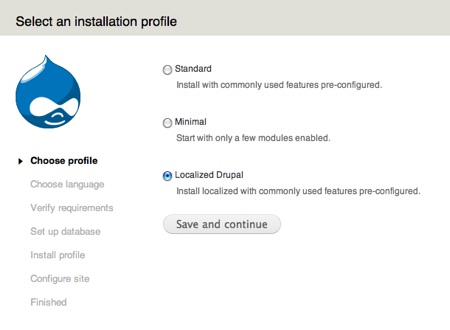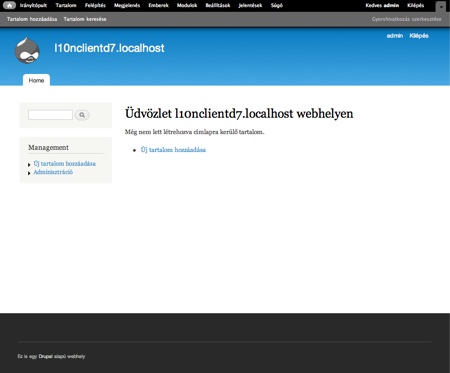I've been involved with Drupal localization since the early times I'm with Drupal and was looking at ways to keep improving language and translation setup. Still, if you need to install Drupal 6 localized, you need to download Drupal 6 in English and when prompted in the installer, go and grab a package for your language. That has a structure resembling Drupal core itself, and if you extract it to the right directory, each translation file will fall into place. Then if you go back to install Drupal, it will go localized.
While many people learned the tricks of the trade, this is not entirely easy. Extracting packages to the same directory as Drupal core is not easy on the Mac, where this ends up by directory overwrites by default. It is a confusing experience for newcomers on various operating systems, because merging two packages by extracting to the same directory is a (clever but) foreign concept. But if you think of it, we tell you to download a file from a well known place, let Drupal know about it and then import it. Why wouldn't the installer download the file and import it for us? With the advancement of http://localize.drupal.org/, the contributed module and theme translations are also decoupled from the projects, so there is even more user effort in obtaining translations for them, while this could all be automated.
This thinking drove to the birth of the Localized Drupal install profile, which is now available in proof-of-concept form for Drupal 6 and 7. The user interface for the installation could definitely use some polish as we need to let you choose from the 70 languages available on localize.drupal.org, but honestly, localized installations should not be harder then this. Let's take it for a spin!

Installing Localized Drupal 7.x-dev
In both versions, you'll be presented with a "Localized Drupal" selection among the install profiles. You need to select this to take advantage of the automation provided. This is due to the architecture of installation profiles. A library component is planned for this profile, so that other distributions can include the code needed to start installations off in a foreign language, but for plain Drupal core installation, you'll need to choose this separate profile.
You'll need to choose your language of course, but you should not be required to do anything else beyond that. This is it.

Localized Drupal 7.x-dev just installed
While this might provide immediate installation simplicity, for contributed modules to provide similar ease of localization installation and updates, Jose Reyero is hard at work on the Localization update module. Think of this as the install and update module for localizations. The Localized Drupal install profile is moving towards including and utilizing Localization update for an overall pleasant localized software experience. As soon as you add a couple contributed modules and a theme, you'll find it much easier to manage interface localizations with Localization update compared to trying to make it work manually. Oh and it works with Drush too.
Feedback on the install profile as well as the update module and the concepts and approaches is welcome.